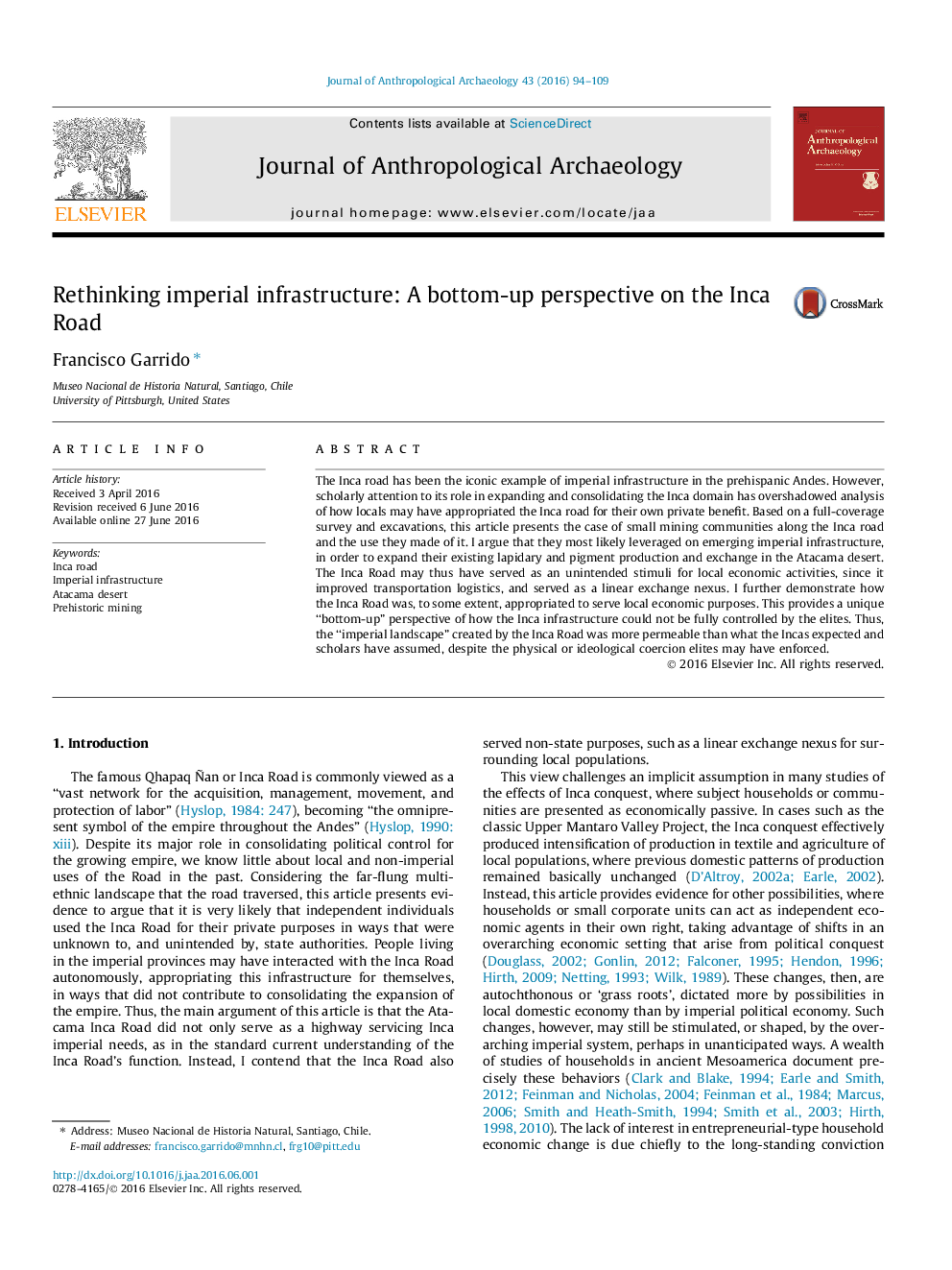| Article ID | Journal | Published Year | Pages | File Type |
|---|---|---|---|---|
| 1034851 | Journal of Anthropological Archaeology | 2016 | 16 Pages |
•The Inca Road did not just serve to expand and consolidate the Inca empire.•Inca Road improved movement logistics and increased local roadside economic activities and exchange.•Locals likely appropriated the Inca road for their own private benefit, unintended by the Inca state.•Prehistoric lapidary miners in the Atacama desert benefited from the road proximity.•The use of the road could not be totally controlled by Inca authorities.
The Inca road has been the iconic example of imperial infrastructure in the prehispanic Andes. However, scholarly attention to its role in expanding and consolidating the Inca domain has overshadowed analysis of how locals may have appropriated the Inca road for their own private benefit. Based on a full-coverage survey and excavations, this article presents the case of small mining communities along the Inca road and the use they made of it. I argue that they most likely leveraged on emerging imperial infrastructure, in order to expand their existing lapidary and pigment production and exchange in the Atacama desert. The Inca Road may thus have served as an unintended stimuli for local economic activities, since it improved transportation logistics, and served as a linear exchange nexus. I further demonstrate how the Inca Road was, to some extent, appropriated to serve local economic purposes. This provides a unique “bottom-up” perspective of how the Inca infrastructure could not be fully controlled by the elites. Thus, the “imperial landscape” created by the Inca Road was more permeable than what the Incas expected and scholars have assumed, despite the physical or ideological coercion elites may have enforced.
Graphical abstractFigure optionsDownload full-size imageDownload high-quality image (251 K)Download as PowerPoint slide
